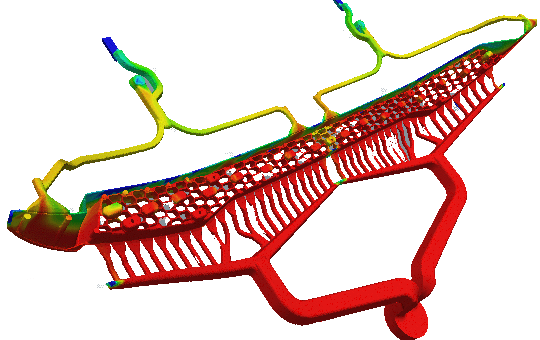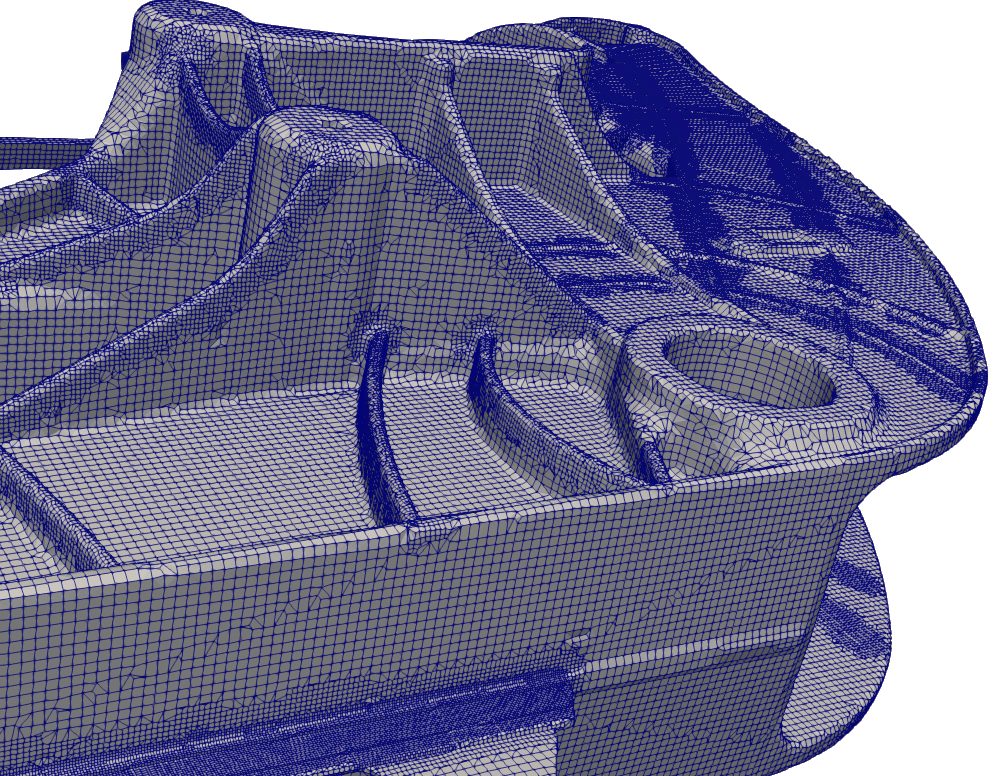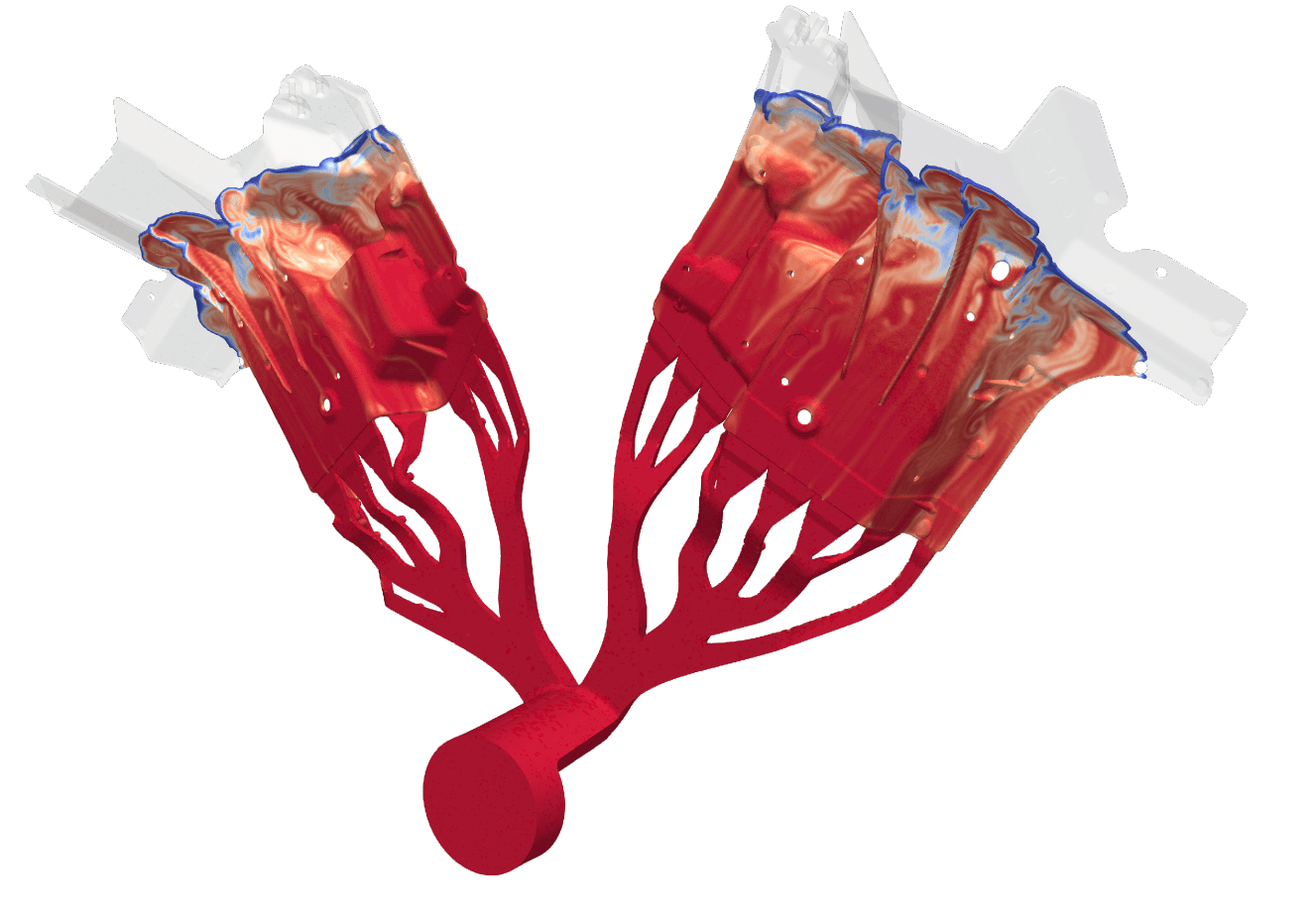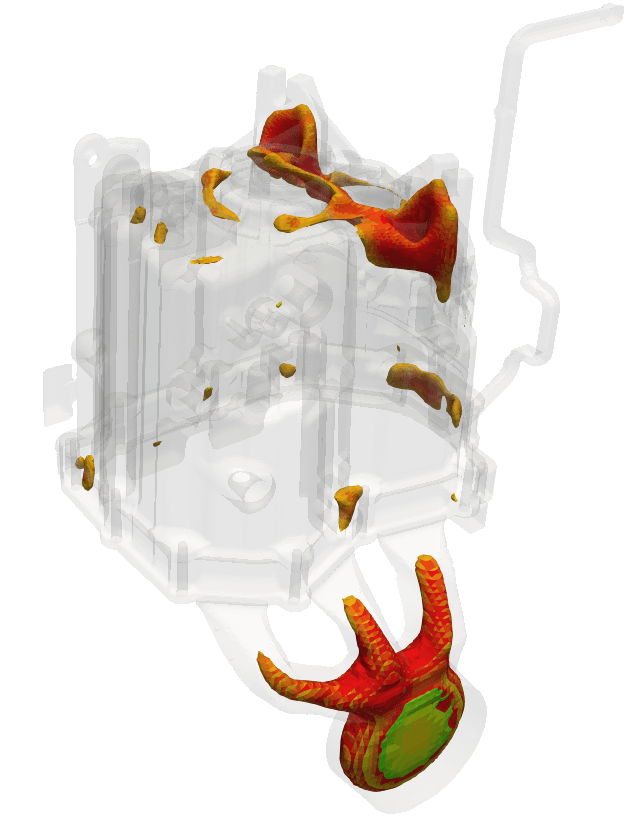

A new generation of simulation software specifically dedicated to die casting

A NEW GENERATION
OF SIMULATION SOFTWARE SPECIFICALLY DEDICATED TO DIE CASTING
A NEW GENERATION
OF SIMULATION SOFTWARE SPECIFICALLY DEDICATED TO DIE CASTING
![]() Direct import of the runner from most common CAD software (included Step, Parasolid™, Iges, Solidworks™, Solidedge™, Catia ™ and more). Complete 3D CAD modelling functions to apply the suggested changes immediately.
Direct import of the runner from most common CAD software (included Step, Parasolid™, Iges, Solidworks™, Solidedge™, Catia ™ and more). Complete 3D CAD modelling functions to apply the suggested changes immediately.
![]() Model preparation, meshing and simulation setup in a few minutes. Intuitive interface that speaks the language of the foundry. Multi-processor hybrid meshing with localized refinement for accurate modelling of the geometry of the casting. Unlimited multiprocessor parallel calculation without additional cost.
Model preparation, meshing and simulation setup in a few minutes. Intuitive interface that speaks the language of the foundry. Multi-processor hybrid meshing with localized refinement for accurate modelling of the geometry of the casting. Unlimited multiprocessor parallel calculation without additional cost.

Very realistic simulation of metal filling that takes into account the pulverization of the liquid alloy as well as the effects of vacuum and air vents. Calculation of porosities related to trapped gas, cold joints and erosion of the mould.
 Fast and accurate solidification simulation that takes into account the geometry of the mould. Prediction of shrinkage porosities and solidification defects.
Fast and accurate solidification simulation that takes into account the geometry of the mould. Prediction of shrinkage porosities and solidification defects.
The powerful calculation engine is combined with a very simple and uncluttered user interface where both data input and results visualization are expressed in a way that makes every operation easy and comprehensible even for operators without a technical background. It is possible to prepare both simulation set-up and 3D mesh in just a few minutes from any kind of geometry. The external free visualization interface allows the easy analysis and sharing of the results for a collaborative approach to die development.
The powerful calculation engine is combined with a very simple and uncluttered user interface where both data input and results visualization are expressed in a way that makes every operation easy and comprehensible even for operators without a technical background. It is possible to prepare both simulation set-up and 3D mesh in just a few minutes from any kind of geometry. The external free visualization interface allows the easy analysis and sharing of the results for a collaborative approach to die development.
Mesh
The mesh is created starting from any kind of geometry format and the process is highly automated, hence the man’s work is reduced to a minimum while the fast and powerful parallel calculation is performed by the CPU.
Castle makes its calculations on a hybrid mesh structure: the mesh is mainly made of hexahedral elements (for a high calculation accuracy and speed) but the elements near the surface are modelled in order to keep the original CAD geometry even in the finest details. Local meshing refinement can be achieved on smaller and thinner regions to locally improve flow modelling and keep smaller details without increasing calculation times.

Mesh
The mesh is created starting from any kind of geometry format and the process is highly automated, hence the man’s work is reduced to a minimum while the fast and powerful parallel calculation is performed by the CPU.
Castle makes its calculations on a hybrid mesh structure: the mesh is mainly made of hexahedral elements (for a high calculation accuracy and speed) but the elements near the surface are modelled in order to keep the original CAD geometry even in the finest details. Local meshing refinement can be achieved on smaller and thinner regions to locally improve flow modelling and keep smaller details without increasing calculation times.


Calculation
The fully parallel calculation is divided (without any additional cost) within the processing cores of the computer (the number of units is set by the user). It’s possible to run several simulations at the same time in order to check different die configurations or process parameters, as well as run simulation queues in batch to be analysed overnight.
Practically speaking, it means an important saving of calculation time and the possibility for the user to achieve more comparative simulations within industry deadlines.
Calculation
The fully parallel calculation is divided (without any additional cost) within the processing cores of the computer (the number of units is set by the user). It’s possible to run several simulations at the same time in order to check different die configurations or process parameters, as well as run simulation queues in batch to be analysed overnight.
Practically speaking, it means an important saving of calculation time and the possibility for the user to achieve more comparative simulations within industry deadlines.

Filling
CastleBODY runs dual phase calculations: it means that both liquid metal, displaced air and any degree of metal/air emulsion are modelled for an unsurpassed air entrapment prediction capability. The effect of venting and vacuum on the main flow pattern can be evaluated: the metal spraying inside the cavity is caught through the simulation and thus even smaller air entrapment can be detected to avoid blistering or surface finishing defects. The behaviour of displaced air in the shot sleeve, runners and venting channels can be visualized to optimize venting shapes, cross sections and design or to optimize injection profile.
Early metal freezing during filling can be detected to prevent the formation of cold laps, oxide flakes and misfillings. Early die washout can also be easily predicted.

Filling
CastleBODY runs dual phase calculations: it means that both liquid metal, displaced air and any degree of metal/air emulsion are modelled for an unsurpassed air entrapment prediction capability. The effect of venting and vacuum on the main flow pattern can be evaluated: the metal spraying inside the cavity is caught through the simulation and thus even smaller air entrapment can be detected to avoid blistering or surface finishing defects. The behaviour of displaced air in the shot sleeve, runners and venting channels can be visualized to optimize venting shapes, cross sections and design or to optimize injection profile.
Early metal freezing during filling can be detected to prevent the formation of cold laps, oxide flakes and misfillings. Early die washout can also be easily predicted.


Solidification
Solidification simulation offers the possibility to quickly check for solidification defects, avoid hot spot formation optimizing cooling channels.
Solidification simulation can be run starting from a filling result (in order to take into account the effects of an uneven filling) or directly from mesh on the part only to early detect possible solidification issues and modify part geometry or die cooling layout.
Solidification
Solidification simulation offers the possibility to quickly check for solidification defects, avoid hot spot formation optimizing cooling channels.
Solidification simulation can be run starting from a filling result (in order to take into account the effects of an uneven filling) or directly from mesh on the part only to early detect possible solidification issues and modify part geometry or die cooling layout.

